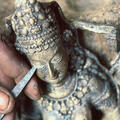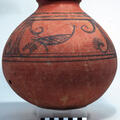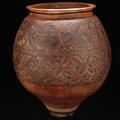Setting the wheels in motion: Re-examining ceramic forming techniques in Indus Civilisation villages in northwest India
"The discovery of the rotational capabilities of the wheel was one of the most significant human inventions, and wheel-enhanced rotation is now pervasive in the tools and machines that we use in our everyday lives. Importantly, the wheel was a major contributor to a range of developments in craft production technology, perhaps most visibly in the various forms of potter’s rotational devices and wheels."










